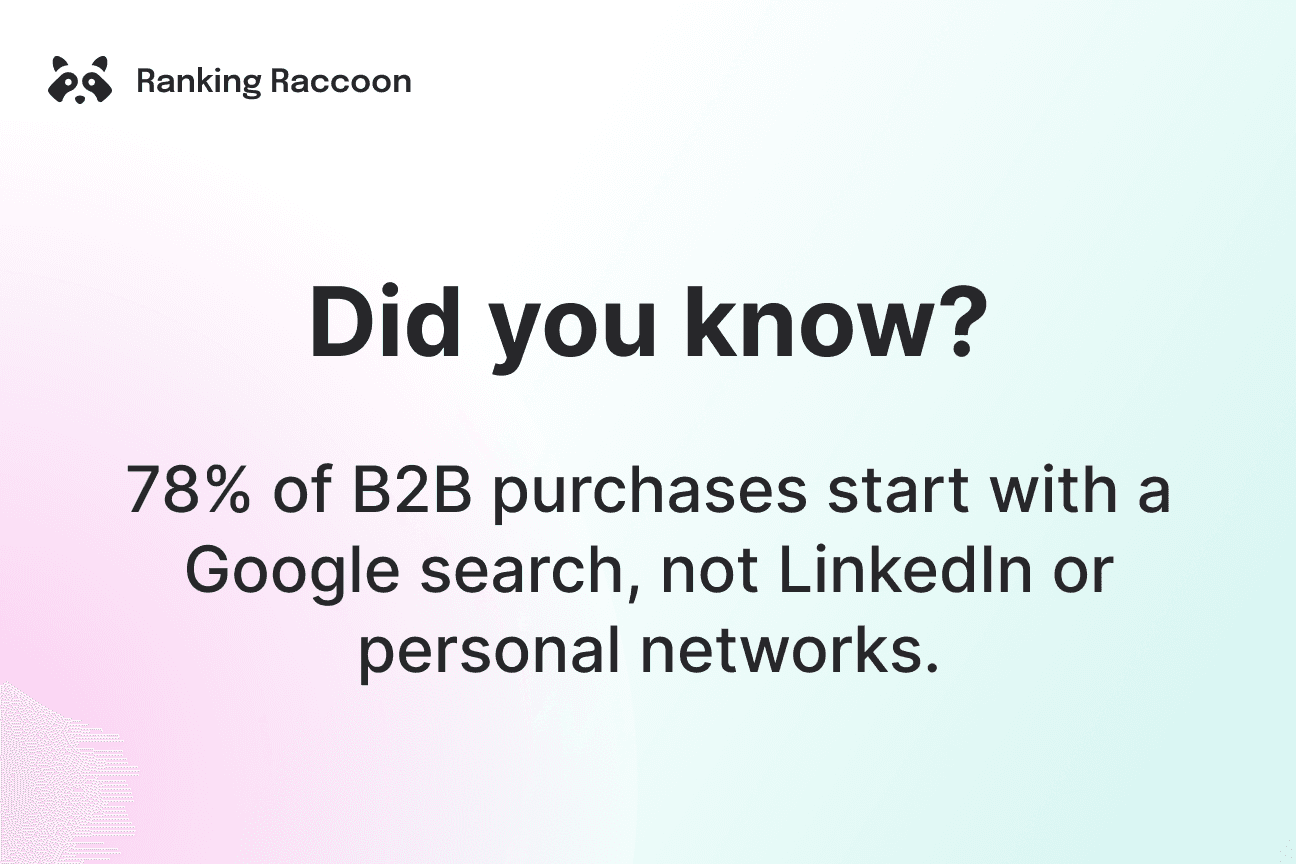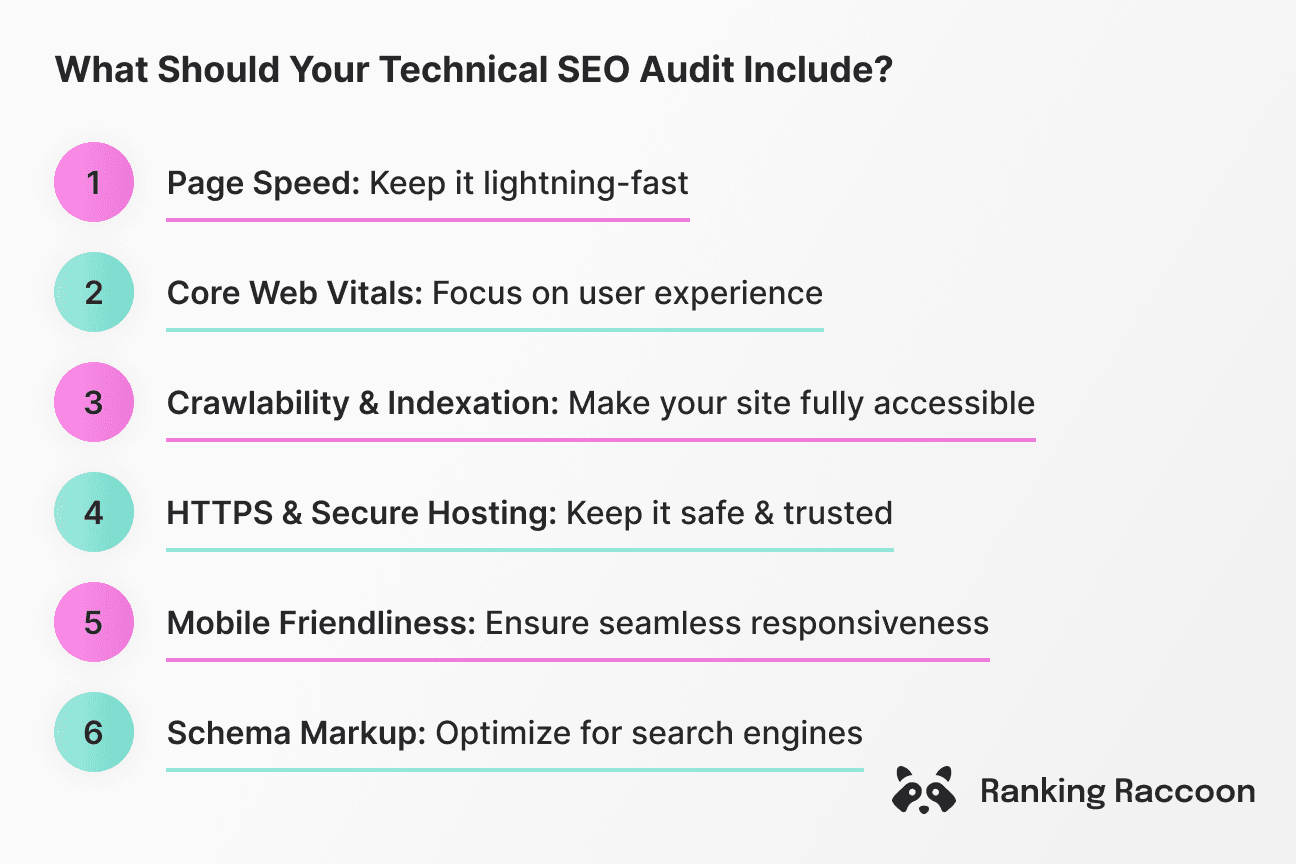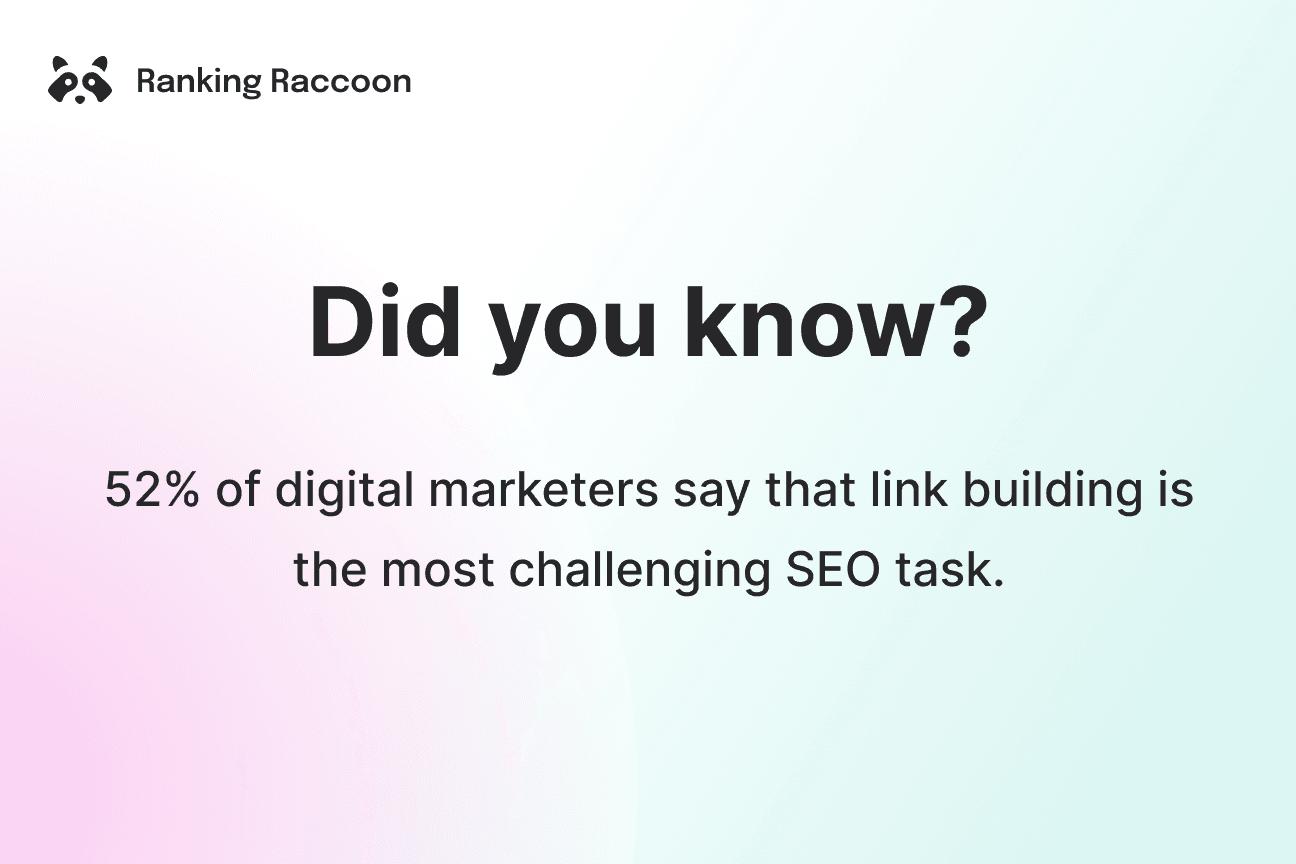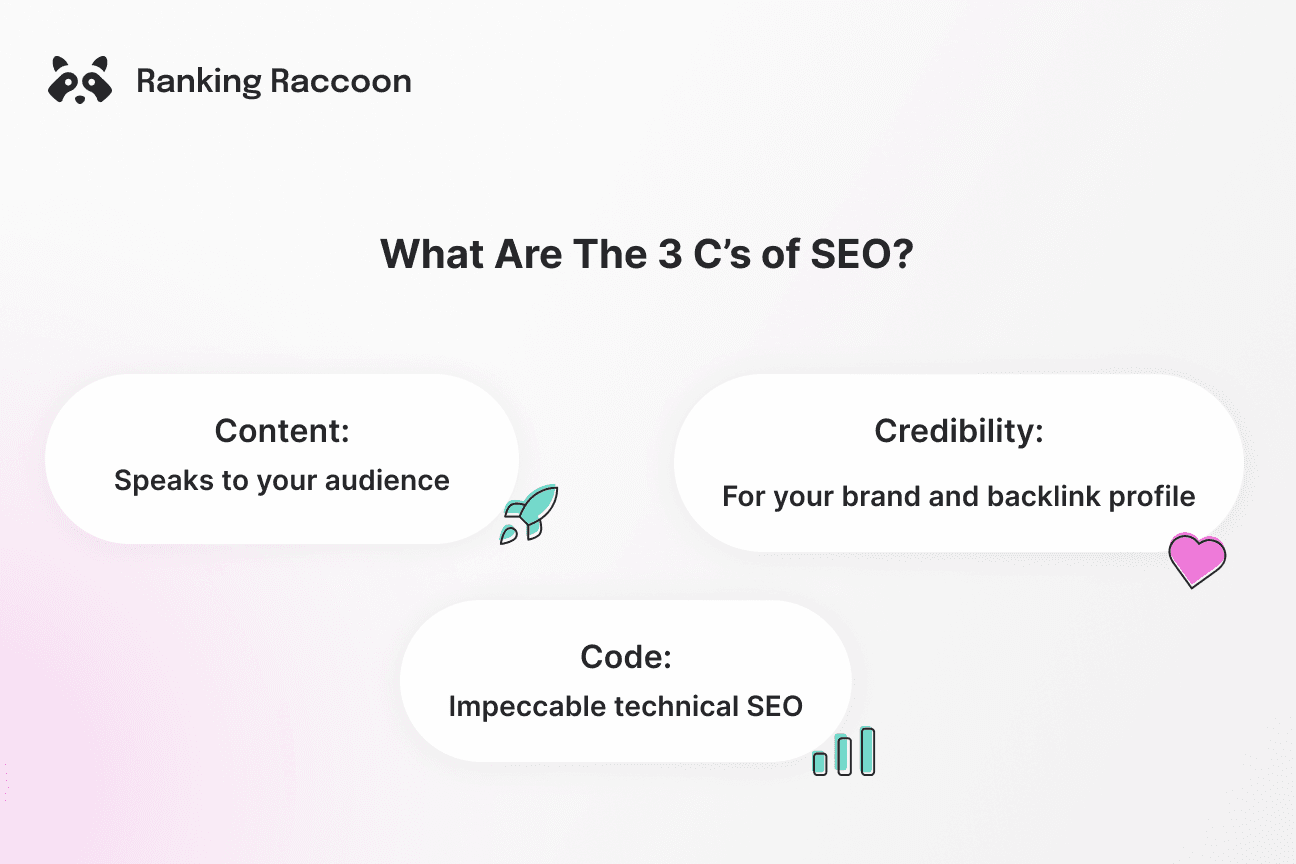Advanced SaaS SEO Checklist for B2B Companies

Eliza Forgacs
B2B SaaS marketing is a special kind of challenge.
(If you’ve decided to read this article, you already know that.)
Traditional SEO mostly focuses on organic visitors and boosting website traffic; meanwhile, SEO for SaaS means building a long-term funnel of leads that convert into paying customers.
The internet is overflowing with “proven” SEO strategies and “trust me, it works” quick fixes. But if you want to generate actual quality leads, you need a deliberate and structured approach. This advanced SaaS SEO checklist will show you exactly how.

SEO Strategy Checklist for SaaS Companies
Let’s take a deep dive into the key elements you absolutely can’t miss when planning your SaaS SEO strategy for your B2B business!
1. Find Keywords that Drive SaaS Growth
Every SEO strategy’s most important part is finding out what your audience is looking for. But how to find the right keywords for SaaS SEO?
- Typical SEO tools like Ahrefs or SEMrush can help identify the right keywords, show you the keyword difficulty and the search volume, and you might also explore AI-powered tools like mentions.so or AnswerthePublic for fresh ideas
- You can count on your actual clients—interview them to find their pain points and reflect them in your content. Voilá! You’ve won the case.
- Keep an eye on your competitors—analyze their rankings, content and backlink profile. Crush them by using Ranking Raccoon for quality backlinks!
Pro tip: Build separate keyword lists for TOFU, MOFU, and BOFU stages. This way, you can create content that covers the full funnel.
2. Run a Technical SEO Audit
The right keywords won’t have the same effect if your website suffers from technical issues. If the user experience isn't smooth like a baby’s face, even the best content won’t rank. Let’s see how a technical SEO audit should look like!
1. Page speed: When we’re talking about page speed, we mean such velocity that can match a cheetah’s full speed during a hunt. After 3 seconds your audience slips out of your hands, so aim for a 2-3 second load time. To achieve that, consider using .webp files and compress videos.
2. Core Web Vitals: measure the real-world user experience, such as the mentioned loading performance, but also focus on interactivity and visual stability. Keep an eye on Largest Contentful Paint (LCP), First Input Delay (FID), and Cumulative Layout Shift (CLS) to ensure your site feels fast and smooth.
3. Crawlability & indexation: If Google can’t crawl your site, users can’t find it. Make sure your site has a clear XML sitemap, robots.txt, and proper internal linking to help search engines index your pages efficiently.
4. HTTPS & secure hosting: Security is a non-negotiable trust factor. Using HTTPS not only protects your users but also boosts your SEO, as Google favors secure websites.
5. Mobile friendliness: Most users will first interact with your site on mobile devices. To make their experience seamless, ensure a responsive design, fast loading times, and easy navigation.
6. Schema markup: Schema tells search engines what your content is about, helping them show it more effectively in search results. This can not only make your listings more eye-catching, but also boosts clicks. Depending on your site, you can add Product, Article, FAQ, or LocalBusiness schema.
Pro tip: Tools like Google PageSpeed Insights and Search Console can help you identify issues and fix them with your dev team.

3. Build a SaaS SEO Content Strategy
Our SaaS SEO checklist for B2B companies can’t be complete without considering high-quality content. Ultimately, your content determines whether website visitors stay or leave—and no one wants to see high numbers when it comes to bounce rates. But as a B2B company, what should your content look like?
- Your blog can be a key part in your SaaS SEO strategy—it’s ideal for attracting organic traffic, educating your audience, and showcasing your expertise. Remember to focus on E‑E‑A‑T (Experience, Expertise, Authority, Trustworthiness) to build credibility and trust with both readers and search engines.
- Offering solutions on your landing pages convinces potential customers to choose your product.
- Creating comparison pages can effectively attract “X vs. Y” searches and draw attention to your offer.
- Share your knowledge with downloadable templates and guides—or as I call them: lead magnets. As AI-driven search evolves, consider how your content could also support AEO (AI Experience Optimization) to stay ahead of your competition.
Why should you consider creating all of the above? Because you want to cover every stage of your funnel. Top-of-funnel blog posts build awareness, mid-funnel case studies nurture interest, and bottom-of-funnel comparison pages drive conversions.
4. Launch your SaaS Link Building Plan
Last but not least: link building—the bringer of great frustration. Without backlinks, even the best-optimized SaaS website won’t reach its full potential. That’s why SaaS link building deserves its own checklist:
Guest Post Like a Pro
Share your valuable insights on relevant industry blogs! This way you can kill two birds with one stone: get backlinks and increase brand awareness.
Get Listed Where It Matters
Submit your product to carefully selected SaaS directories to boost your visibility, credibility, and attract visitors who actually care.
Turn PR Into Backlinks
Team up with media, industry blogs and strategic partners to get your brand talked about! Press mentions don’t just build buzz—they deliver valuable backlinks and powerful SEO authority.
Engage in Communities That Count
Join relevant communities, be active on SaaS forums and Slack groups! Jump into conversations, help out, and share useful resources to naturally earn backlinks and build real relationships.
Link building is notoriously time-consuming. Hours of prospecting and sending cold emails often go unanswered. If you’ve experienced this maddening process, let me introduce Ranking Raccoon, our community-driven link building platform that makes earning backlinks faster, easier, and more effective.

Ranking Raccoon: Your Go-to SaaS Link Building Platform
Ranking Raccoon isn’t about buying links—in fact, paid links are worthless here. Every connection is free, built on genuine collaboration and trust. It’s a networking platform where SaaS companies and marketers connect to exchange backlinks in a safe, transparent, and mutually beneficial way. Instead of wasting time on cold outreach, you collaborate with peers who share the same goal: sustainable growth.
Here’s how Ranking Raccoon makes SaaS link building easier:
- Every user and site is manually verified. Moderators check metrics, niche relevance, website health, and look out for red flags.
- You can browse real, active websites in your industry and view detailed profiles.
- Filter your searches by domain authority, niche, or relevant keywords to find quality partners fast.
- Start a chat directly in-platform to pitch links or collaborate. No cold emails needed.
The system is designed to protect your time and deliver better results to boost your domain authority and accelerate organic growth. With anti-ghosting features (notifications, reply reminders, suspension of inactive users), you save time and focus on building partnerships that truly scale your SaaS business.
The 3 C’s of SEO: Your Framework to Success
Even the most detailed checklist needs a bigger framework behind it. That’s where the 3 C’s of SEO come in. Think of them as the “holy trinity” of search optimization—if just one is missing, the whole system collapses like a wobbly Jenga tower.
- Content: Always keep your target audience front and center. Great content speaks their language, addresses their pain points, and guides them naturally through every stage of your funnel.
- Code: I mean impeccable technical SEO, including the Core Web Vitals, your site’s mobile friendliness and much more.
- Credibility: If someone searches for your brand, what will they stumble upon? You need to carefully manage your brand awareness and don’t be afraid to be picky with your backlink profile!
When all parts of this ‘holy trinity’ work together in a balanced way, your efforts truly start to pay off. The advanced SaaS SEO checklist gives you the step-by-step actions, while the 3 C’s remind you of the bigger picture that keeps everything in sync.

Conclusion: What is this SaaS SEO Checklist All About?
An advanced SaaS SEO checklist isn’t just about ticking off items on a to-do list. It’s a strategic framework for creating momentum. Every step you take, from keyword research to content and SaaS link building, add up to a system that works for you in the long run.
Consistency is what turns individual tactics into lasting results. So, stay consistent and leverage tools like Ranking Raccoon, and you’ll create a long-term pipeline of organic leads that drive sustainable growth.
Step up and start connecting with like-minded SaaS companies! Exchange links safely, focus on building genuine relationships, and watch your SEO efforts pay off over time.

Eliza Forgacs
Marketing Manager